
Estimate your total pension pot at retirement and your yearly retirement income.
Monthly contributions

(Personal bank account)
(Limited company bank account - if you have one)
Advanced options

(Government pension most people will get)
(You can take 25% tax-free at 57 or older)
Here's our assumptions, FAQs and more information about the self-employed pension calculator and self-employed pensions.

Being self-employed, your pension is all in your hands – but don’t panic, if you’re not already, you can get on track easier than you think.
You’ll need to open a personal pension (easy to do), where you can let the experts handle the investments (pension money is invested), while you simply save money into it (ideally monthly). Given enough time, your money should grow very large and provide that comfortable retirement you deserve.
Some good news, you'll also get a massive 25% bonus from the government (and even more if you pay 40% and 45% tax), and your money will grow tax-free! More on this later.
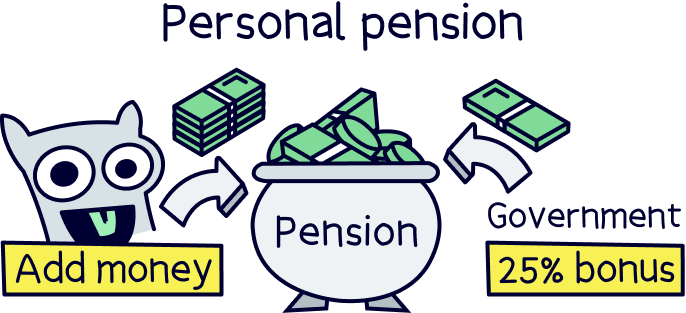
Not sure where to get a personal pension? Our top pick is PensionBee¹, it’s easy to use, low cost and a great record of growing pensions over time. Plus you can pay in from a limited company if you have one (and save even more tax).
You’ll also get £50 added to your pension for free with Nuts About Money.
Alternatively, compare all the top pension providers.
As a bit of housekeeping, this calculator is intended to help you plan for your retirement as a self-employed person, but it is only an estimate – there are a lot of moving parts when it comes to the calculations behind the scenes.
So although we’ve aimed to make it as accurate and useful as possible, over time, some things will change (such as how much your money grows). The important thing is to get started saving as soon as you can. And feel free to check back regularly to see if you’re still on track – we’ll be updating the calculator to make sure it’s always useful.
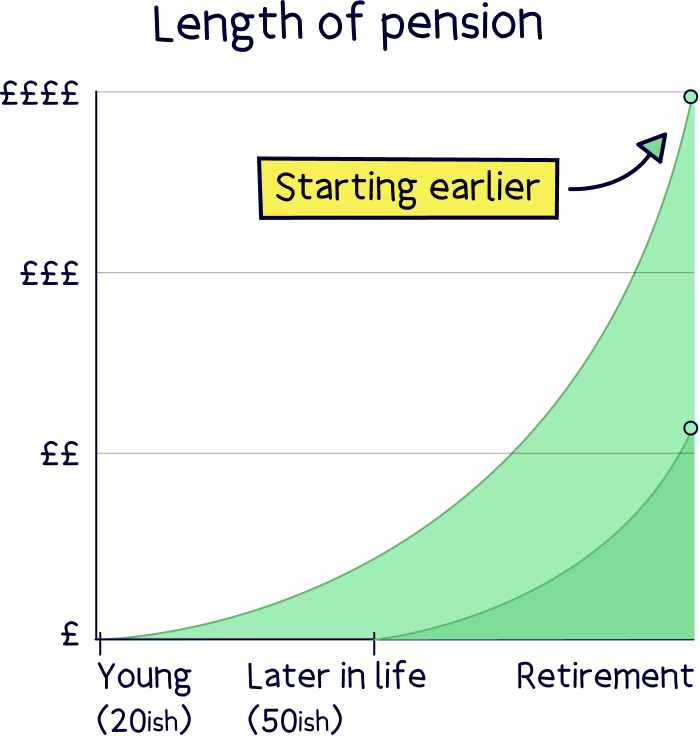
Here’s what we've used behind the scenes as part of the calculations.
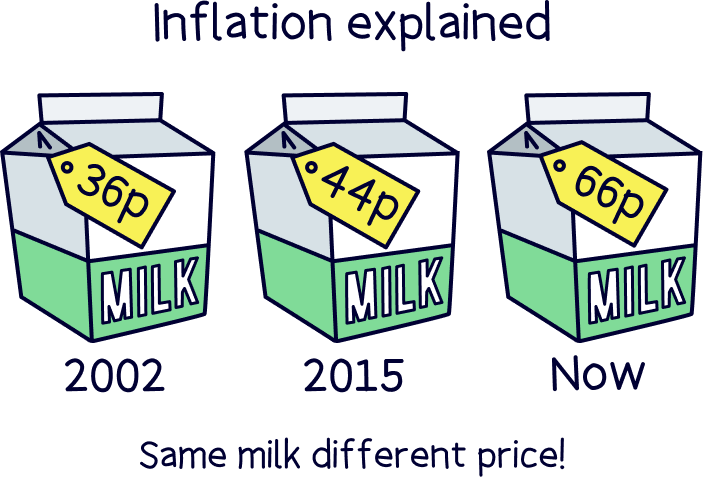
Yep! If you’re self-employed, you’ll get the State Pension, which is the pension from the government, and you’ll get it when you reach State Pension age.
Your State Pension age will either be 66, 67 or 68, depending on your date of birth. Moving to 67 by 2028, and 68 much later.
Nuts About Money tip: find out when you’ll get the State Pension with our State Pension age calculator.
You'll get the State Pension as long as you've made at least 10 years worth of National Insurance contributions, and 35 years to get the full amount.
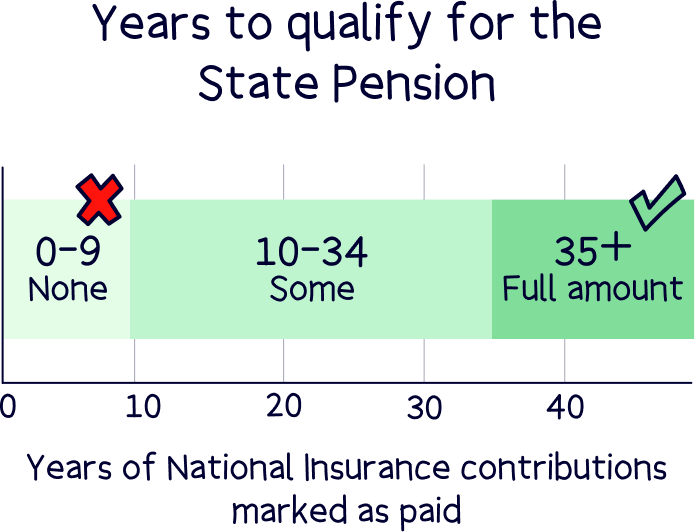
Being self-employed, you’ll make these contributions as part of your Self-Assessment tax return at the end of the tax year.
However, the State Pension alone is likely not enough to get by on in retirement.
Currently, it’s just £230.25 per week (£11,973 per year), which is quite far below the recommended minimum of £13,400 per year (more on that below) – we'll run through why personal pensions are super important for those self-employed (and those employed) in more detail just below too.
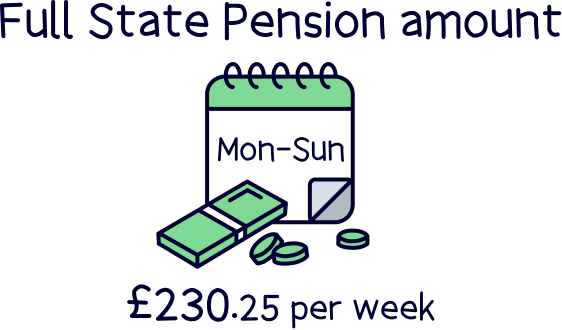
We’ve planned for the State Pension to rise by 2.5% every year. This is because State Pension increases are written in law, with something called the ‘triple lock’. It must rise by one of three things each year, whichever is the highest of:
Therefore, as a minimum, the State Pension must rise by at least 2.5% per year. Hopefully it rises by more, but it’s not a good idea to plan for more. And, it would only increase by more if things got more expensive (like food), rather than actually providing pensioners with more spending money (sorry to say!).
To plan for the estimated retirement income you’ll need in future, we’ve used three popular categories (minimum, moderate and comfortable), put together by the Pensions and Lifetime Savings Association, called the Retirement Living Standards.
They’re a guide to how much you’ll likely need to spend in retirement, not how much your income should be – we’ve accounted for that and planned for a higher income to account for estimated taxes you’ll pay on your income.
And none of the standards include any housing costs, such as rent or a mortgage. It’s presumed you’ll have paid off your mortgage by the time you retire. If you do think you’ll have housing costs, you’ll need to add these on top too.
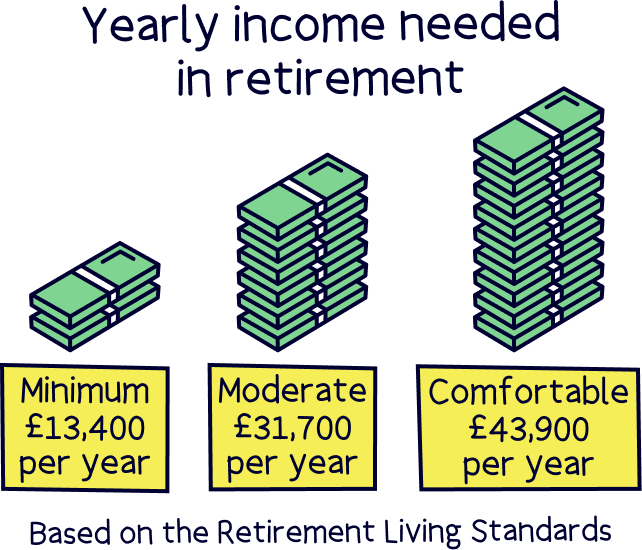
This is the very least you’ll need in order to pay your bills and buy the essentials when it comes to things like food. You won’t be able to afford a car, and there’s not much leftover for clothes and presents for friends and family (e.g. at Christmas). You might be able to afford a week holiday in the UK each year.
Today, this is £13,400 per year for a single person and £21,600 for a couple.
This provides more financial security, with the essential bills covered, and more for yourself. There’s a bit more for food, and you can eat out once per month. You’ll be able to run a small cheap car (over 3 years old), and replace it every 7 years.
There’s money for things like new clothes and presents for friends and family for birthdays and Christmas, and you can afford a low cost, holiday in Europe each year.
Today, this is £31,700 per year for a single person, and £43,900 for a couple.
This provides much more financial freedom, with a higher budget for food each week. However, it’s still not a life of luxury. You can replace your car every 5 years (still a cheap car), and there’s cash spare for maintenance on your home, and extra for things like clothes and presents.
You’ll be able to afford a more expensive holiday in Europe, and weekend breaks.
Today, this is £43,900 per year for a single person and £60,600 for a couple.
Being self-employed, personal pensions are pretty much essential to build your pension up and provide a retirement income above the State Pension. Even if you’re aiming for just the minimum amount in retirement, you’ll still need to save into a personal pension.
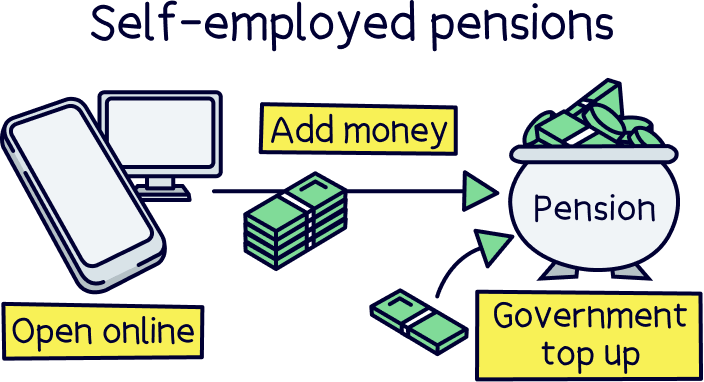
A personal pension is one you set up yourself, you decide how much to pay into it, and later when to withdraw from it. Technically, they’re a type of private pension, and the word private pension is often used for a personal pension – however a private pension also includes a workplace pension, which is a pension your employer will set up for you if you’re employed.
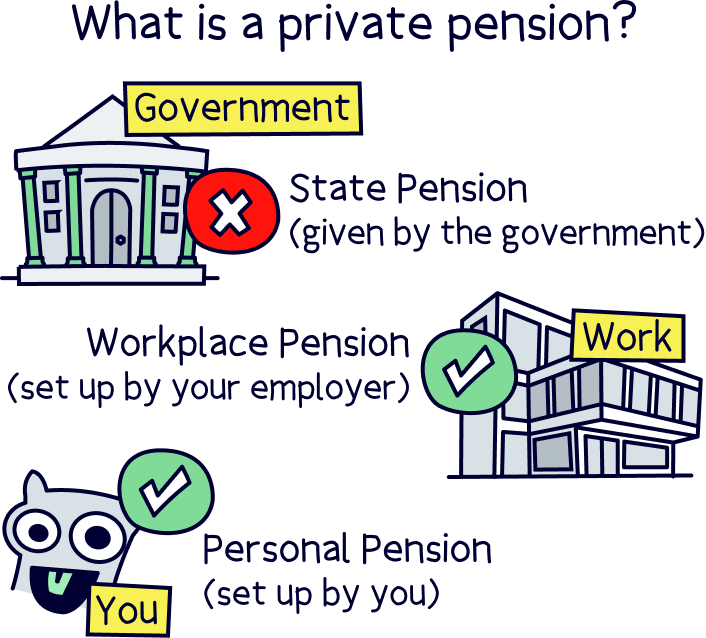
A personal pension doesn’t mean you have to make your own investment decisions – you can pick a pension provider where the experts handle things, just like a pension with a job. You just save your money into it, leaving the experts to do their thing and aim to grow your pension (significantly) over time.
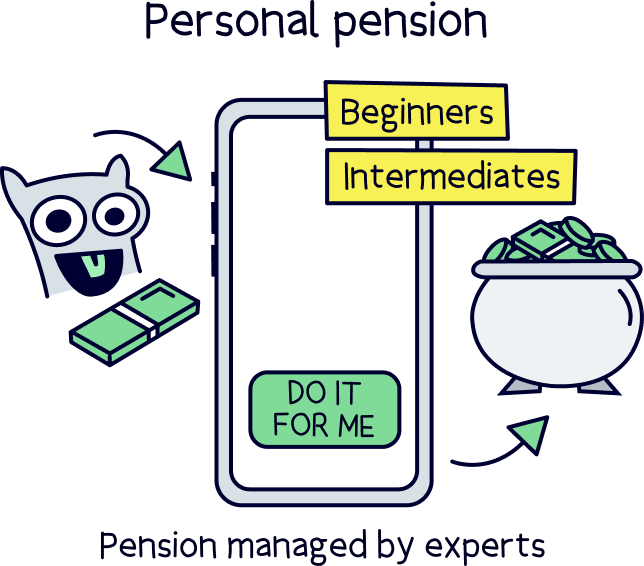
To confuse things a little, you can make your own investment decisions if you want to (only recommended for those experienced), and this is typically via a self-invested personal pension (SIPP).
Personal pensions are pretty great at building a pension pot over time – you can save into them completely tax-free, and they grow tax-free too. When you save into one, the government will automatically give you back the tax you’ve paid (or will pay) on your income, as a 25% bonus straight into your pension pot.
So if you add £80 in, the government will add £20, and you’ll end up with £100 in your pension pot. Pretty great right?
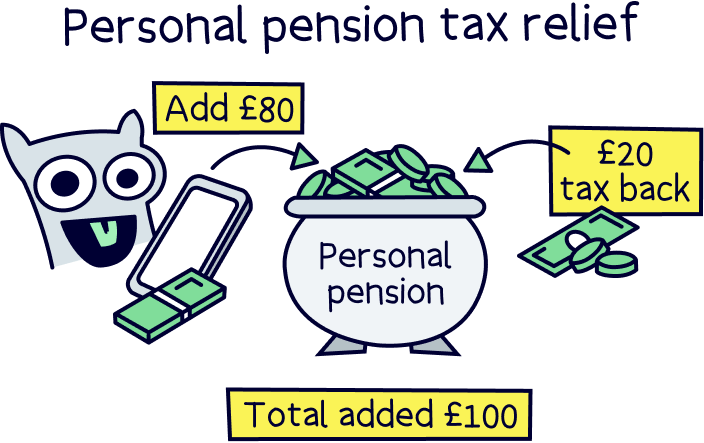
This refunds 20% Income Tax, and if you earn more than £50,270 and pay 40% or 45% tax, you can claim back the tax paid at those rates on your Self Assessment tax return each year. Technically, all this tax back is called tax relief. Taxfix¹ can help you fill in your Self Assessment tax return if you want help. Their service is low cost and 5* rated.
You can also transfer any old pensions from old jobs over to your personal pension, to keep all your retirement savings in one place – potentially benefiting from a better pension provider, your money growing more over time, lower fees and you won't forget about all your pensions over the years when the time comes to retire.
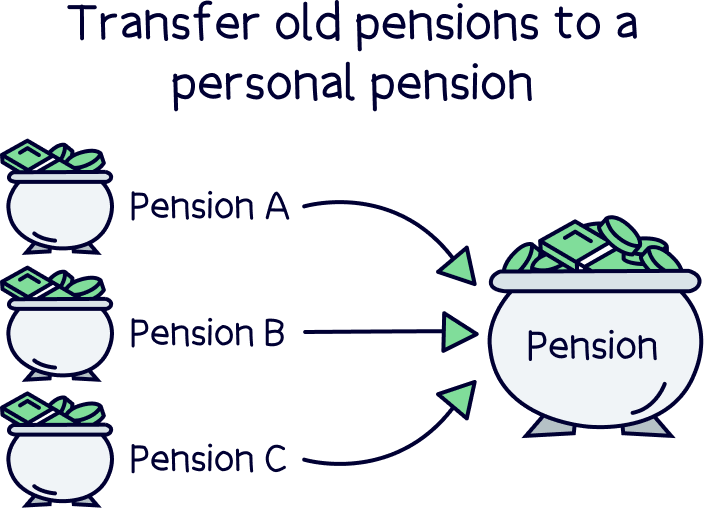
Your personal contributions are what you are planning to save from your personal bank account into your personal pension (your self-employed pension).
With these contributions, you’ll automatically get a 25% bonus from the government added directly to your pension pot (to refund tax paid at 20% tax), and if you’re earning over £50,270, and paying 40% or 45% tax, you can get additional tax relief (tax back) on your contributions (which you can claim on your Self Assessment tax return).
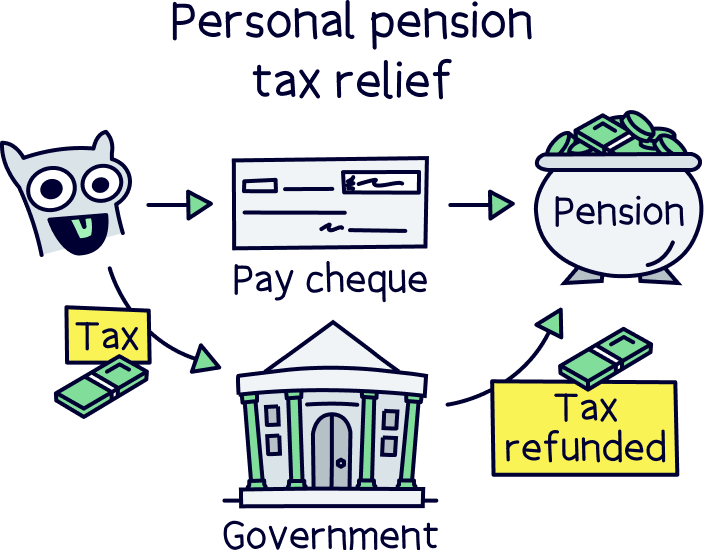
If you run your business through a limited company, rather than acting as a sole trader (with your business in your own name), you have the ability to make pension contributions directly from your business (using your business bank account).
Doing this means your pension contributions count as a business expense and so you’ll be able to reduce your Corporation Tax (tax on profits), which can be between 19-25%. So a pretty big saving.
Plus, you can also potentially save more into your pension pot, as there’s a higher limit on how much you can save each year (up to £60,000). With personal contributions, the limit is your total income each year or £60,000 (whichever is lower).
And your contributions will go straight into your pension pot tax-free.
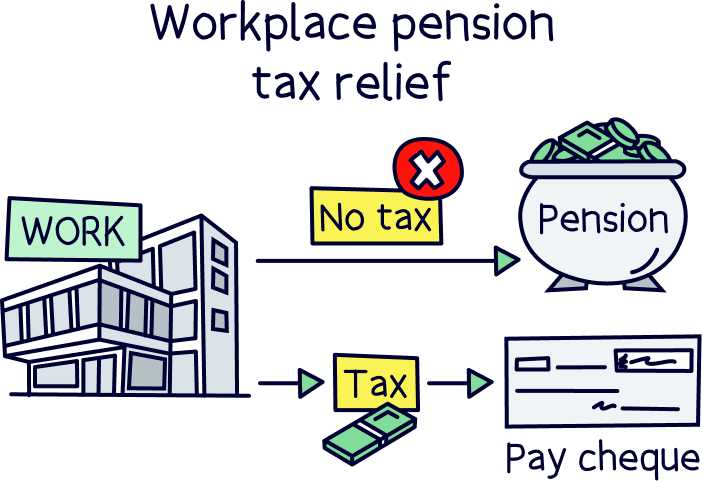
Not all personal pension providers allow you to pay in through a limited company. If you have a limited company and you’re not already doing this, and want to, our top provider who offers this service is PensionBee¹, as it's easy to do, has low fees and they have a great record of growing pensions over time.
Nuts About Money tip: learn more with our guide to pensions for limited company directors.
Your current income is how much you make personally each year, plus any other taxable income such as interest on savings.
For instance, if you’re a sole trader, it will likely just be your annual profit. If you pay yourself via a limited company, it’s typically how much you pay yourself from the company (as a salary and dividend).
We use this figure to work out how much tax you’ll likely be paying on your income, and therefore we can work out how much additional tax relief you could claim back on your Self Assessment tax return, based on your personal contributions you set in the calculator.
We use your current age to determine your estimated total pension pot by the time you retire, and to work out your State Pension age.
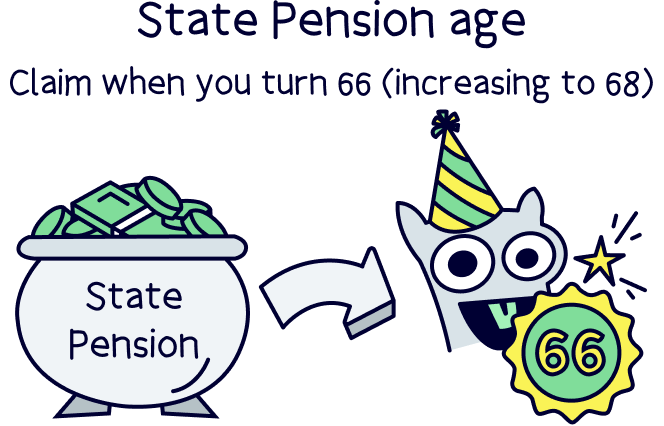
This is how much you currently have in your pension pot already. This includes all of your old pensions from old jobs (if you have them), and anything in your current personal pension if you have one.
This doesn’t need to be exact, an estimate is just fine. Or you could put zero for now.
This is the age you expect to retire. By default, it's your estimated State Pension age, but you can move this up or down to plan ahead.
We’ll only add the State Pension income to the calculations when you are due to receive the State Pension.
With a private pension, you can take 25% of it completely tax-free from the age of 55 currently, but this is rising to 57 in 2028. You can take this as a tax-free lump sum (all in one go) if you want to.
If you do opt for this, we’ll reduce your pension pot by 25%. It’s a big chunk to take, and will have a big impact on your retirement income. We typically recommend letting your pension pot grow larger over time until you really retire, to build a larger retirement income.
You won’t lose the 25% tax-free portion if you don’t take it. Instead, when you do take your cash out of your pension, 25% of each withdrawal will be tax-free.
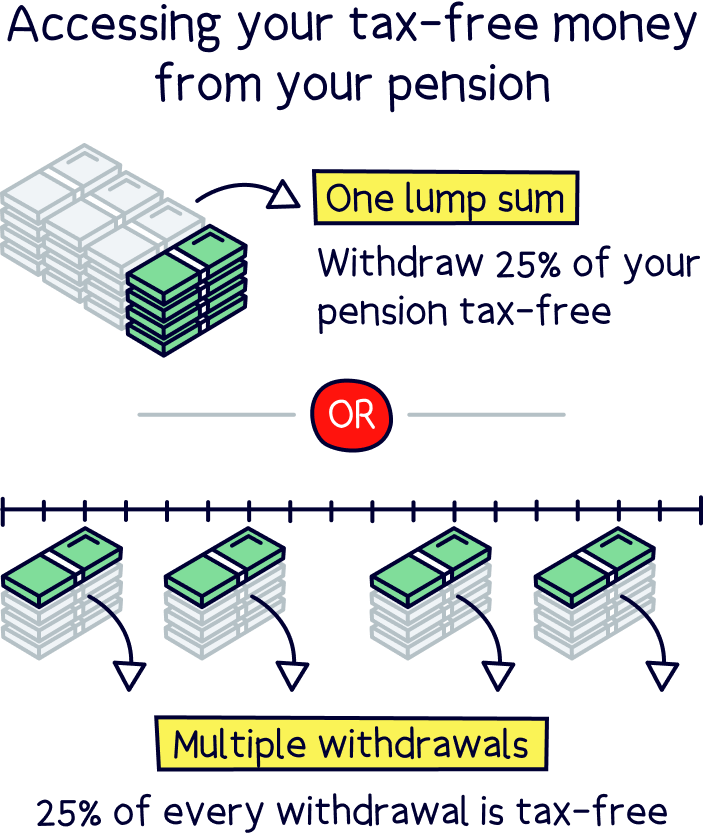
Note: there is an upper limit, which is currently £268,275 – the maximum withdrawal amount that will be tax-free.
This is how much your money is expected to grow by each year, while inside your pension pot. Your pension is typically looked after by the investment experts and they’ll use sensible investment strategies to grow your money sensibly over time.
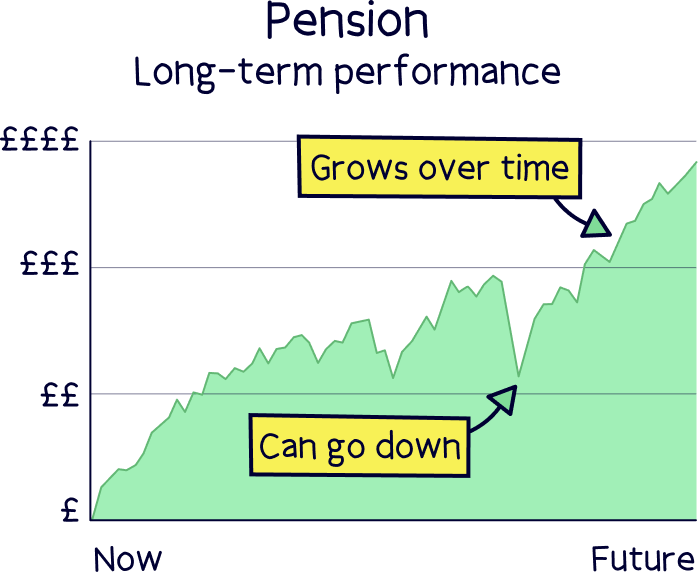
We’ve used 5% as the default, which is around the average you would expect. It’s not too optimistic, and not too pessimistic. A typical retirement plan would plan from 2% to 8%.
7% is often a typical figure used, and 5% means we can account for fees involved with your pension pot too (which can range from 0.50% to 2% per year, depending on your pension provider).
After retirement, we’ve estimated your pension pot will continue to grow by 3% per year – it will typically be in lower risk investments that aim to provide a regular income while preserving your pension pot, rather than aiming to grow it larger over time (which is higher risk in the short term).
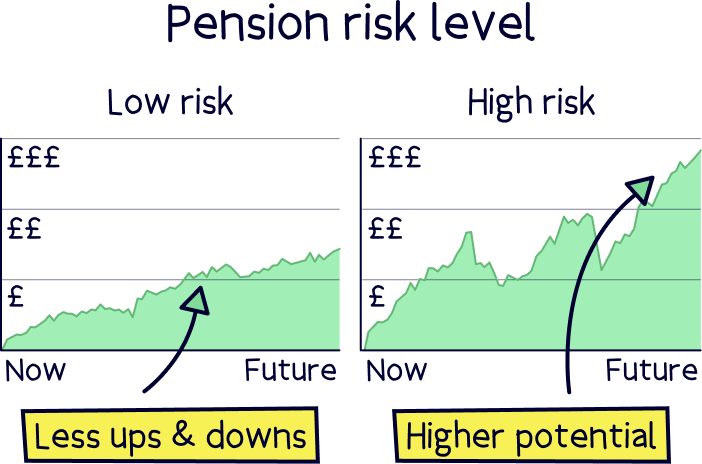
This is the age you expect to live to. We’ve used a default of 100, which is typical of retirement planning. It’s best to make plans for around this age due to life expectancies rising over time.
For example, if you were 18 today, there’s a 1 in 4 chance you’ll live until 96 years old, and 1 in 10 chance you’ll live to 100 (ONS, 2024).
Estimating an age younger than this could mean you end up running out of money when you need it most (and likely not able to work).
If you do sadly pass away younger than planned, your money isn’t lost, your pension will be passed to your family, or anyone you nominate. If you pass away under the age of 75, there won’t be any Inheritance Tax to pay on it. After 75, they might pay Income Tax on the money they withdraw.
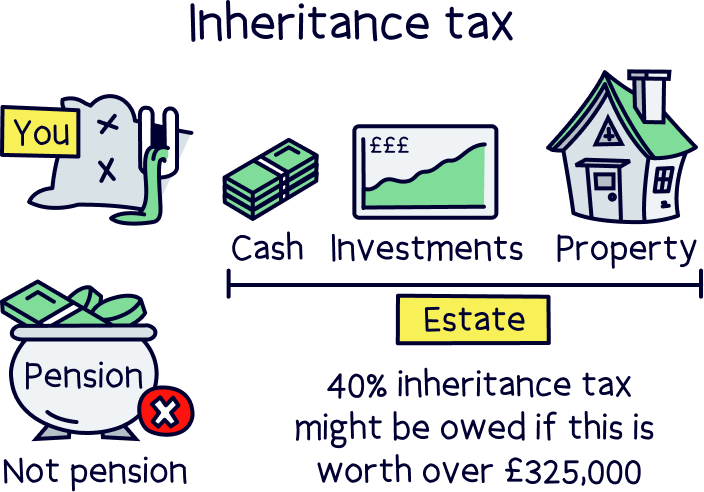
Your pension is super important – much more so as you’re self-employed and don't have a workplace pension like employees. The only way to build up a decent retirement income is to take charge of your own pension.
Don’t rely on the State Pension, it’s a good boost to your retirement income, but by itself will likely not be enough for you to live on. A personal pension is pretty much essential.
Personal pensions are easy to set up, and excellent to manage your pension over time – with all your contributions being tax-free, and it should grow nice and big over time. The sooner you start saving, the larger your pension pot can be when you retire (start today!).
If you’re not sure where to get started, here’s our top picks for pension providers.
All the best saving for retirement!
PensionBee will contribute £50 to your pension when you open a PensionBee account.